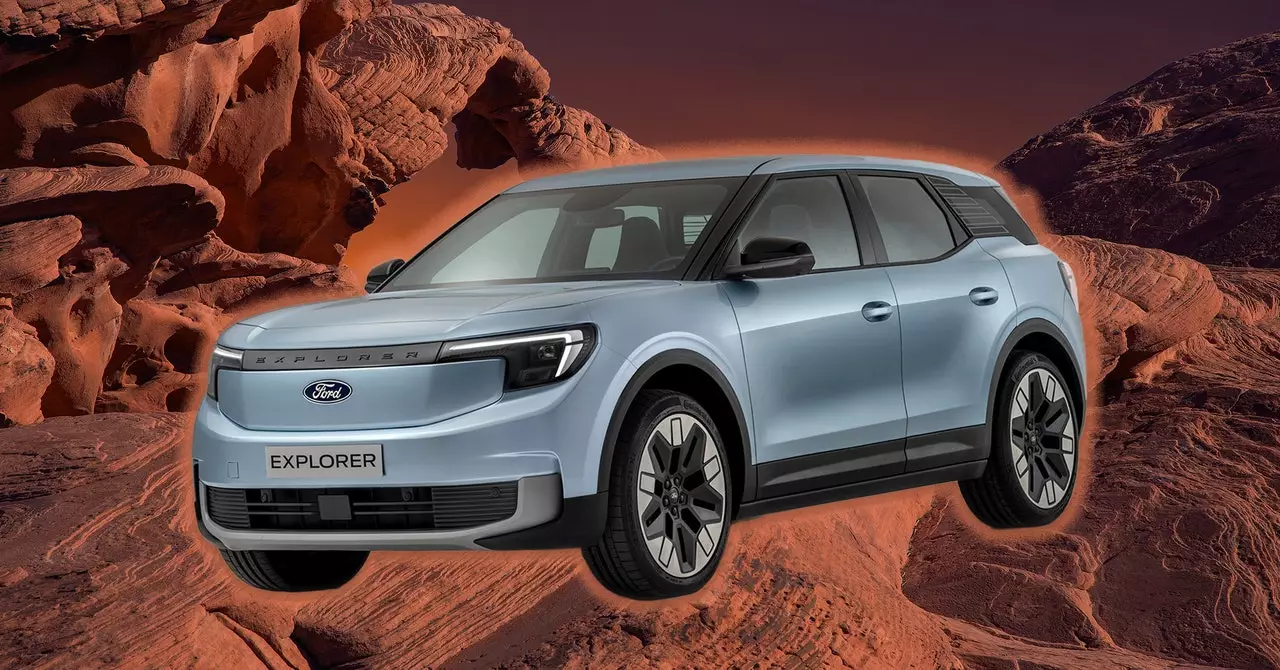The automotive industry is notoriously competitive, where manufacturers must balance innovation, cost-effectiveness, and consumer expectations. A recent conversation with Amko Leenart, Ford Europe’s design director, sheds light on the challenges the company faces when integrating components from partners like Volkswagen (VW). The decision to rely on VW’s underwhelming controls in vehicles such as the Explorer and Capri may seem ill-advised, reflecting a broader issue within Ford’s approach to product development. Although Leenart indicated attempts were made to improve user interface responsiveness, the truth remains: compromises were made in the name of financial expediency.
Such decisions can have long-lasting repercussions, ultimately detracting from the vehicle’s overall appeal. In a marketplace teeming with alternatives that excel in design and technology, overlooking user experience in favor of cost-cutting could render brands like Ford less competitive. For the Explorer, which is notably a good electric vehicle (EV) with commendable range and a striking exterior, the choice to utilize inferior controls may stem from a narrow focus on immediate financial viability rather than a long-term strategy aimed at bolstering brand loyalty and customer satisfaction.
The automotive landscape is dynamic, with consumer preferences and technology evolving rapidly. Ford’s recent models like the Explorer and Capri have not only seen delays but have also coincided with the emergence of highly competitive alternatives that may overshadow them due to timing. While these delays might seem like operational challenges, they reflect a deeper strategic miscalculation. By concentrating solely on maximizing range and minimizing costs, Ford has potentially forfeited vital market share to rivals that present well-rounded offerings. The pricing strategies, particularly for models like the top-tier Explorer priced around £54,000 (roughly $68,500), further complicate the situation. When competing with not only traditional rivals but also nimble newcomers, this price point can appear unjustifiable, especially if the user experience is subpar.
Furthermore, regulatory frameworks, like the UK’s Zero Emission Vehicle mandate, put additional pressure on manufacturers. With the requirement that at least 25% of new vehicles sold must be emissions-free by 2025, the urgency for Ford to ramp up EV production is palpable. The challenge Ford encounters is not merely about producing electric vehicles faster; it’s about ensuring quality and value. Despite the mixed fortunes of Ford’s offerings, there are glimmers of hope in their hybrid successes, such as the F-150 Lightning and the Mach-E. These vehicles illustrate a possibility of what Ford can achieve when it invests in its own innovative solutions and designs instead of relying too heavily on palliatives.
As Ford navigates these tumultuous waters, the expectation remains that the company can pivot towards creating more fully-developed electric vehicles that resonate with consumers. The demand is there, but whether Ford can rise to the occasion and deliver a product that feels inherently “Ford” rather than a carbon copy of competitors is yet to be determined.
If Ford can make the product accessible and true to its identity while ensuring a superior user experience, it stands a fighting chance in this competitive arena. It requires a shift from imitating others to innovating boldly— a necessary evolution to maintain relevance in the fast-changing automotive landscape. Ford’s history is rich with innovation; revisiting this legacy could indeed pave the way for a triumphant return in the EV market.

